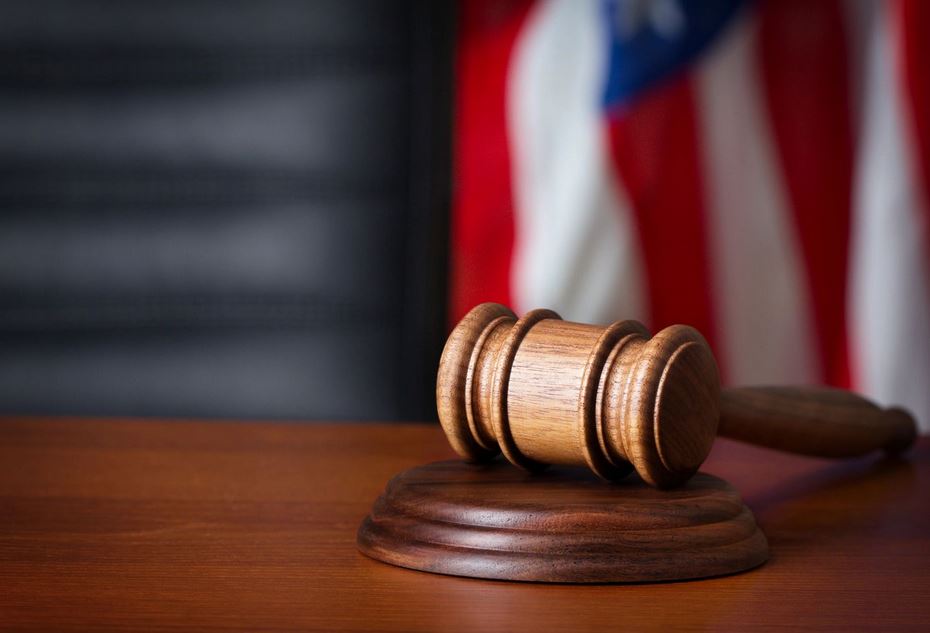WORLD NEWS FLASH

UNITED STATES
After the death of George Floyd, the federal government took a closer look at policing in Minneapolis, and its findings were not good.
Following a comprehensive investigation, the Justice Department announced today that the Minneapolis Police Department (MPD) and the City of Minneapolis (City) engage in a pattern or practice of conduct in violation of the U.S. Constitution and federal law. The Department also announced that the city and MPD have agreed in principle to resolve the Department’s findings through a court enforceable consent decree with an independent monitor, rather than through contested litigation.
Specifically, the Justice Department finds that the MPD:
The Department identified and concluded that persistent deficiencies in policy, training, supervision, and accountability contribute to the unlawful conduct.
“George Floyd’s death had an irrevocable impact on his family, on the Minneapolis community, on our country, and on the world,” said Attorney General Merrick B. Garland. “The patterns and practices of conduct the Justice Department observed during our investigation are deeply disturbing. They erode the community’s trust in law enforcement. And they made what happened to George Floyd possible. Today, we have completed our investigation, but this is only the first step. We will continue to work with the city and the MPD toward ensuring that MPD officers have the support and resources they need to do their jobs effectively and lawfully as we work together toward meaningful and durable reform.”
The city and MPD cooperated fully with the Justice Department’s investigation. The Department provided a comprehensive written report of its investigative findings to the city and MPD. The report acknowledges the changes already made by the city and MPD, and it identifies additional remedial measures that the Department believes are necessary to fully address its findings.
The Department opened this investigation on April 21, 2021. The investigation was conducted by career attorneys and staff in the Civil Rights Division’s Special Litigation Section and the Civil Division of the U.S. Attorney’s Office for the District of Minnesota. The team conducted numerous onsite tours of MPD facilities; interviewed MPD officers, supervisors, and command staff; spoke with city officials and employees; accompanied behavioral crisis responders and officers on ride-alongs; reviewed thousands of documents; and watched thousands of hours of body-worn camera footage. Department attorneys and staff also met with community members, advocates, service providers, and other stakeholders in the Minneapolis area.
The Department conducted this investigation pursuant to 34 U.S.C. § 12601 (Section 12601), which prohibits law enforcement officers from engaging in a pattern or practice of conduct that deprives people of rights protected by the Constitution or federal law, the Safe Streets Act of 1968, Title VI of the Civil Rights Act of 1964, and Title II of the Americans with Disabilities Act.
The findings announced June 16 are the result of the Department’s civil pattern or practice investigation and are separate from the Department’s criminal cases against former MPD officers for federal crimes related to the death of George Floyd.
The Department will reach out to members of the Minneapolis community for input on remedies to address the Department’s findings. Individuals may also submit recommendations by email at Community.Minneapolis@usdoj.gov or by phone at 1-866-432-0268.
Additional information about the Civil Rights Division is available on its website at www.justice.gov/crt. Additional information about the U.S. Attorney’s Office for the District of Minnesota is available at www.justice.gov/usao-mn.
Information specific to the Civil Rights Division’s Police Reform Work can be found here: www.justice.gov/crt/file/922421/download.
MASS SHOOTING UPDATE
Information recent as of 6-20-2023 at 12 p.m.
2023 Mass Shooting Stats: (Source: Mass Shooting Tracker – https://www.massshootingtracker.site/data/?year=2023)
Total Mass Shootings: 372
Total Dead: 490
Total Wounded: 1443
Shootings Per Day: 2.18
Days Reached in Year 2023 as of June 20: 171
Latest High Profile Incident
Location: Strip mall parking lot – Willowbrook, IL
Time: Around 12:30 a.m. local time, June 18.
Deceased: 1.
Injured: 22, including two critical.
Shooter(s): Number of shooters unknown as of press time.
Weapon(s): Unknown style of weapon.
Motive: Unknown. Details unknown as of press time.
Status: At-large.
Notes: Shooting happened during a Juneteenth celebration event. There was a fight reported near the shooting location.
WORLD
WATER TROUBLES ABOUND FROM DESTROYED DAM
UN humanitarians continue bringing life-saving aid to survivors of the flooding from the Kakhovka Dam, but they’ve warned that hundreds of thousands more people in the country’s south face severe water shortages.
On June 16, relief supplies were delivered to vulnerable families in the rural Kherson region close to the front line.
The destruction of the dam on June 6 has impacted water supplies, sanitation and sewage systems, in addition to health services.
As part of the aid effort, the UN Children’s Fund (UNICEF) and UN World Food Program (WFP) transported live-saving water and food to families by boat, only 15 kilometers from the contact line.
“We are using today four boats to deliver assistance to these 500 families, a small community that is here close by where I am now,” said Saviano Abreu, head of communications for UN aid coordination office OCHA, in Ukraine.
“These communities, they already have been facing the consequences of the war. This area was under Russian control. Late last year around November, it was retaken by Ukraine and now, they are now facing this new catastrophe with the flooding here.”
The emptying of Kakhovka Reservoir has left tens of thousands of people in southern Ukraine without access to piped water, mainly in the Dnipro region.
The reservoir – one of the largest in Europe – is reportedly 70 percent empty, according to Ukrainian authorities. The width of the reservoir has also decreased from three kilometers to one, while the water level is now at around seven meters, well below the 12-meter operational threshold, OCHA reported.
“Our calculation is that 200,000 people in the Dnipro region, for example, have already been cut off from the water from their houses,” said Mr. Abreu.
But that could rise to affect more than 700,000 people as the reservoir is the only source for that whole part of southern Ukraine, not just the Kherson region, he warned.
Large urban areas in the Dnipro region, including Pokrovska, Nikopolska and Marhanetska, are completely cut off from centralized water and others like Apostolivska and Zelenodolska have extremely limited access.
The receding floodwater has also created other deadly challenges in the form of landmines that have been scattered far and wide.
“This area, I think it is one of the most mine contaminated parts of the world,” said Mr. Saviano. “It is the reason, why for example, agriculture in Kherson, in Mykolaiv, Zaporizhzhia have been impacted because of the mine contamination, so the floodwater is moving the mines, that is a reality.”
Abigail Hartley, Chief of Policy, Advocacy and Donor Relations section from the UN Mine Action Service (UNMAS) added that “when the water subsides the mines are there.
“(The) good thing is that mines float, so they do stay on the surface. But, of course, there’s a lot of other flood debris and they can get buried in sediment. So, it is a challenge.”
She said Ukrainian authorities had done “a good job of de-mining so far.”
Since the destruction of Kakhovka dam, OCHA and humanitarian partners have continued life-saving operations. At least 10 inter-agency convoys have reached those in need.
EUROPE
UK OFFICIAL EMBRACING STOP & SEARCH
UK Home Secretary Suella Braverman has written to chief constables of all 43 police forces in England and Wales, to give her full backing to the common sense policing tactic and to urge them to ensure their officers are prepared to use the full powers at their disposal, so they can be more proactive in preventing violence before it occurs.
The Home Secretary also calls on the police to use powers to arrest and investigate instances where someone is unlawfully obstructing a stop and search and for police to publish more body-worn footage quickly. It is hoped that by telling the whole story quickly, innocent police officers will not be subject to trial by social media over their actions.
The drive comes as new data shows more than 100,000 weapons have been removed from Britain’s streets since 2019 through a range of tactics – almost half of which were seized in stop and searches, which have also lead to more than 220,000 arrests. The latest data available shows that serious violence has been driven down by 25% since 2019.
Home Secretary Suella Braverman said: “Carrying weapons is a scourge on our society. And anyone doing so is risking their own lives as well as the lives of those around them. This dangerous culture must be brought to a stop.
“My first priority is to keep the public safe and people who insist on carrying a weapon must know that there will be consequences.
“The police have my full support to ramp up the use of stop and search, wherever necessary, to prevent violence and save more lives.
“Every death from knife crime is a tragedy. That’s why I also back the police in tackling this blight in communities which are disproportionately affected, such as among young black males. We need to do everything in our power to crack down on this violence.
In the year ending March 2022, 99 young people lost their lives to knife crime in England and Wales, and 31 of those victims were black. Black males are, therefore, disproportionately more likely to be killed by violence and knife crime. Though the government recognizes black males are more likely to be stopped and searched, our first priority must be on prevention and public safety.
The Home Secretary has also provided an update on safeguards the government is putting in place on stop and search powers to strengthen trust between the police and local communities. After consulting with the policing sector, the government will go further to strengthen 2 of the conditions of the former Best Use of Stop and Search Scheme by putting them into law.
These conditions are:
- Police should communicate with the local community when a Section 60 order is being put in place in an area, unless this would hinder a sensitive operation
- Data on every stop and search interaction must continue to be collected for the Home Office to publish for transparency and public scrutiny
As committed to in the government’s Inclusive Britain report, the Home Office is also working with partners to develop a national framework on how the use of police powers – including stop and search – are scrutinized at a local level.
Currently, local panels made up of members of the public, chaired often by an independent party, review randomly selected records and footage of incidents of stop and search and reflect on whether officers have acted appropriately, providing feedback to their local force. The national model will improve consistency and standards across forces, help strengthen local communities’ confidence in their local force and improve the police’s confidence to exercise these powers.
Too many criminals who carry knives and weapons go on to offend time and again. Our new serious violence reduction orders aim to help end that cycle by giving the police powers to automatically search those already convicted of knife and offensive weapon offences. This acts as a deterrent, while also ensuring that those who persist on carrying knives are more likely to be caught. The orders are being piloted in 4 police force areas for 2 years.
The government recognizes that the drivers behind serious violence are complex. Tough law enforcement action is only one part of our approach to tackling the root causes of serious violence. The government has also invested £170 million in early intervention, education and prevention schemes since 2019, with our network of Violence Reduction Units supporting more than 215,000 vulnerable young people in the past year alone.


